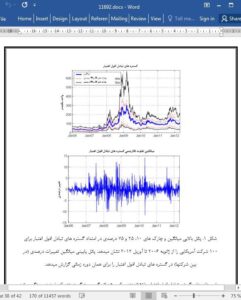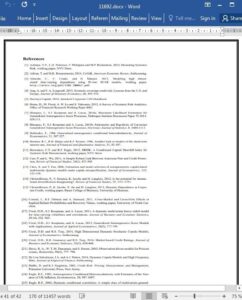Abstract
This paper proposes a new class of copula-based dynamic models for high-dimensional conditional distributions, facilitating the estimation of a wide variety of measures of systemic risk. Our proposed models draw on successful ideas from the literature on modeling high-dimensional covariance matrices and on recent work on models for general time-varying distributions. Our use of copula-based models enables the estimation of the joint model in stages, greatly reducing the computational burden. We use the proposed new models to study a collection of daily credit default swap (CDS) spreads on 100 U.S. firms over the period 2006 to 2012. We find that while the probability of distress for individual firms has greatly reduced since the financial crisis of 2008-09, the joint probability of distress (a measure of systemic risk) is substantially higher now than in the pre-crisis period.
1 Introduction
Systemic risk can be broadly defined as the risk of distress in a large number of firms or institutions. It represents an extreme event in two directions: a large loss (e.g., corresponding to a large left-tail realization for stock returns), across a large proportion of the firms. It differs from “systematic” risk in that the latter is usually taken to refer to the exposure of an asset to a general market risk, and carries no reference to the size, direction, and prevalence that is inherent in a notion of “systemic” risk. There are a variety of methods for studying risk and dependence for small collections of assets (see Patton (2013) for a recent review) but a paucity of methods for studying dependence between a large collection of assets, which is required for a general analysis of systemic risk.
6 Conclusion
Motivated by the growing interest in measures of the risk of systemic events, this paper proposes new flexible yet parsimonious models for time-varying high-dimensional distributions. We use copula theory to combine well-known models for univariate distributions with new models of the conditional dependence structure (copula) to obtain dynamic joint distributions. Our proposed new dynamic copula models can be applied in dimensions of 100 or more, which is much greater than commonly considered in the literature. These models draw on successful ideas from the literature on dynamic modeling of high-dimensional correlation matrices, (e.g., Engle (2002)) and on recent work on models for general time-varying distributions (Creal, et al. (2013)). We propose a “variance targeting” type estimator for this class of dynamic copulas to dramatically reduce the number of parameters to be estimated by numerical optimization.











